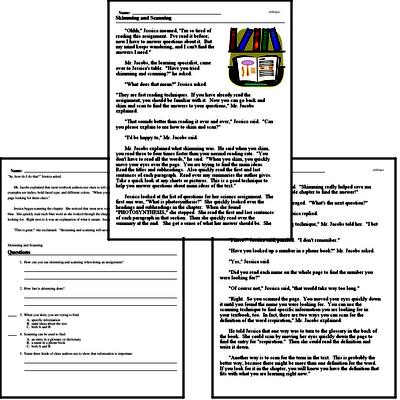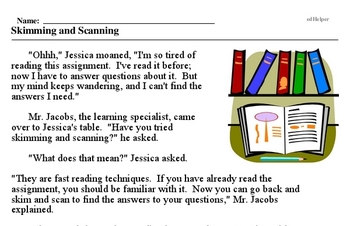Skimming and Scanning
"Ohhh," Jessica moaned, "I'm so tired of reading this assignment. I've read it before; now I have to answer questions about it. But my mind keeps wandering, and I can't find the answers I need."
Mr. Jacobs, the learning specialist, came over to Jessica's table. "Have you tried skimming and scanning?" he asked.
"What does that mean?" Jessica asked.
"They are fast reading techniques. If you have already read the assignment, you should be familiar with it. Now you can go back and skim and scan to find the answers to your questions," Mr. Jacobs explained.
"That sounds better than reading it over and over," Jessica said. "Can you please explain to me how to skim and scan?"
"I'd be happy to," Mr. Jacobs said.
Mr. Jacobs explained what skimming was. He said when you skim, you read three to four times faster than your normal reading rate. "You don't have to read all the words," he said. "When you skim, you quickly move your eyes over the page. You are trying to find the main ideas. Read the titles and subheadings. Also quickly read the first and last sentences of each paragraph. Read over any summaries the author gives. Take a quick look at any charts or pictures. This is a good technique to help you answer questions about main ideas of the text."
Jessica looked at the list of questions for her science assignment. The first one was, "What is photosynthesis?" She quickly looked over the headings and subheadings in the chapter. When she found "PHOTOSYNTHESIS," she stopped. She read the first and last sentences of each paragraph in that section. Then she quickly read over the summary at the end. She got a sense of what her answer should be. She wrote it on her paper.




